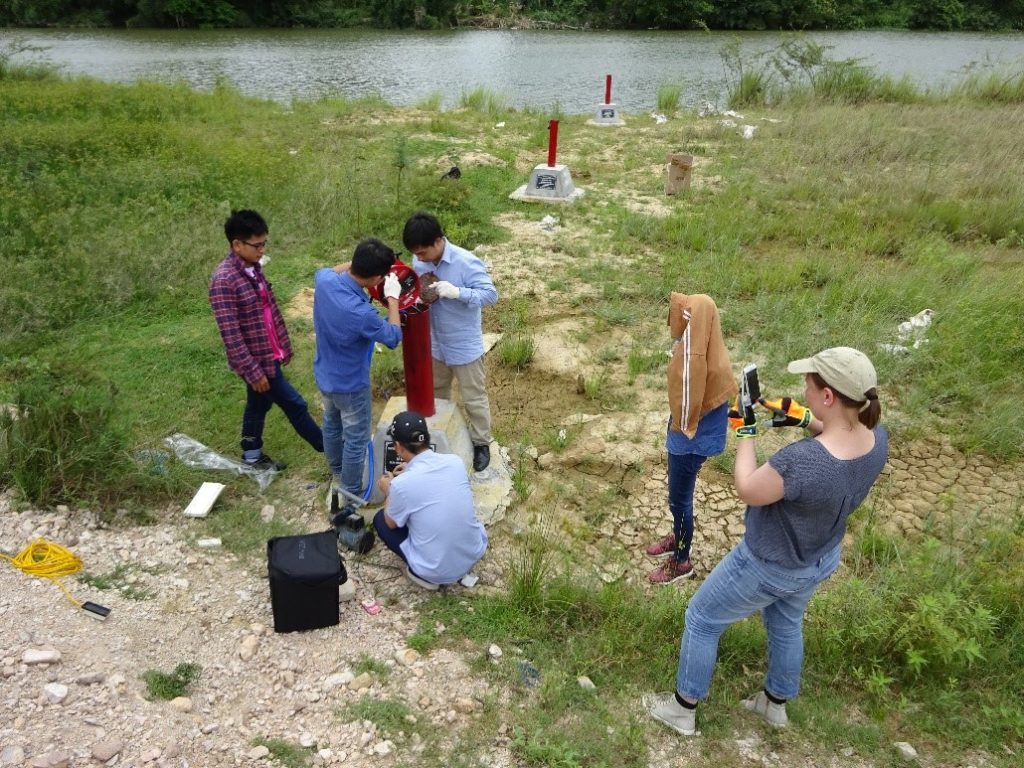Managed Aquifer Recharge Solutions Promote Sustainable Management of Groundwater Resources
The Hydrogeology and the Global Change project provides solutions for current and future challenges to secure clean and adequate drinking water.

The Hydrogeology and the Global Change project (HYGLO), funded by the Geological Survey of Finland (GTK) provides solutions to groundwater issues related to the changing climate. It also responds to the challenges posed by the global change by identifying its impacts on groundwater conditions, in particular. Changing precipitation patterns, longer drought periods, increased evaporation as temperatures rise, rising water levels, floods and changes of frost depth, snowfall and spring melt all affect the volume of groundwater as well as its quality. On the other hand, growing population and urbanisation create more challenges as the need for clean water increases and as the built environment changes the hydrological cycle due to, amongst other things, soil sealing and increasing groundwater’s vulnerability to contamination.
The Quality of Artificially Recharged Groundwater Corresponds to that of Natural Groundwater
Managed Aquifer Recharge (MAR) has been determined to be one good method for sustainable management of groundwater resources. Artificially recharged groundwater was used as household water in Europe as far back as the 19th century, and its utilisation in Finland also started as early as 1929, in Vaasa. Finns started using artificially recharged groundwater more extensively in the 1970s (Juuti et al. 2017). The utilisation of MAR also increases the reliability of water services during a crisis, as groundwater is better protected from threats such as atmospheric pollution than surface water. The aim of MAR is to produce artificially infiltrated groundwater that is similar to natural groundwater without using water treatment or by processing the water as little as possible (Helmisaari et al. 2003). The quality of artificially recharged groundwater generally corresponds to the quality of natural groundwater (Vienonen et al. 2012). When implemented correctly, MAR is an environmentally friendly, climate-proof, reliable and cost-effective way of securing year-round water supply in very different types of climatic conditions and hydrogeological environments.
In Finland, managed aquifer recharge is mostly applied by pool filtration, irrigation or well filtration, using surface water with suspended solids removed as the raw water (Jokela et al. 2017). In addition, surface water filtration into the groundwater may occur at groundwater intake plants located near water areas, either intended or unintended (for example the RANTAVA project of the Finnish Environment Institute). Bank filtration may also cause problems in the iron and manganese concentrations in the groundwater, for example. On the other hand, it can significantly increase the water quantity available at a water intake plant and facilitate the sustainable use of groundwater. When the residence time of infiltrated or bank filtrated water in the soil before the water intake is long enough, the natural processes of the soil have the time to purify the water before it reaches the water intake plant.
Research Methods of the Surface Water-Groundwater Interaction Are Evolving
In future years, GTK will utilise the HYGLO project to test and develop research methods for cost-efficient and reliable identification of surface water-groundwater interaction and, in particular, bank filtration. A few pilot sites with bank filtration will be selected for the project. This summer, studies will be carried out with Kuopion Vesi Oy water service company at Jänneniemi groundwater intake plant, where bank filtration from Kallavesi has been utilised since 2008. The Jänneniemi water intake plant is a fully biological plant and no chemicals are used for water treatment. Filtering lake water through layers of soil removes microbes and humus from the water. During bank filtration, iron and manganese are dissolved in the water, but they are removed by biological sand filtration at the Jänneniemi water treatment plant (Kuopion vesi, 2013). Various monitoring methods and chemical variables for the study of surface water–groundwater interactions, among other things, will be tested at Jänneniemi. The first field tests will begin in June, and we will share more results at the end of the field test period.
Most groundwater intake plants in Finland utilising bank filtration are quite small in size, and the processes of bank filtration have not necessarily been studied in detail. These smaller intake plants, in particular, have rarely prepared for the changes and challenges that climate change will bring. The larger plants will also require further reviews of, for example, the quality changes of bank filtrate caused by climate change in order to prepare properly. Growing algae blooms, pharmaceutical residues and microplastics ending up in water and changes to groundwatersoil processes are already challenges today, but their impacts may grow even further. Information and expertise on the potential risks related to artificially recharged groundwater or bank filtration as well as tools for risk management are, therefore, also needed in Finland. Managed aquifer recharge and bank filtration have a long tradition in Finland, and the experience gained can be utilised together with new research data to solve the current and future challenges of securing clean and adequate drinking water both in Finland and the world.
Text
Jaana Jarva, Chief Scientist, Geological Survey of Finland
References
Helmisaari, H-S., Illmer, K., Hatva, T., Lindroos, A-J., Miettinen, I., Pääkkönen, J., Reijonen, R. (toim.). 2003. Tekopohjaveden muodostaminen: imeytystekniikka, maaperäprosessit ja veden laatu. TEMU -tutkimushankkeen loppuraportti. Metsäntutkimuslaitoksen tiedonantoja 902.
Jokela, P., Eskola, T., Heinonen, T., Tanttu, U., Tyrväinen, J., Artimo, A. 2017. Raw Water Quality and Pretreatment in Managed Aquifer Recharge for Drinking Water Production in Finland. Water 9(138). doi:10.3390/w9020138
Juuti, P. S., Katko, T. S., Rajala, R. P. 2017. Sata vuotta vesihuoltoa Suomessa 1917–2017. Kehrämedia Oy.
Kuopion Vesi. 2013. Raikasta tekopohjavettä ja pohjavettä. Pisaroita 2/2013.
Vienonen, S., Rintala, J., Orvomaa, M., Santala, E., Maunula, M. 2012. Ilmastonmuutoksen vaikutukset ja sopeutumistarpeet vesihuollossa. Suomen ympäristö 24.

Geophysics is a good tool to differentiate between the best producible sites. It also helps to select areas favorable for infiltering surface water to be utilized as artificial aquifers basing on effective porosity property.